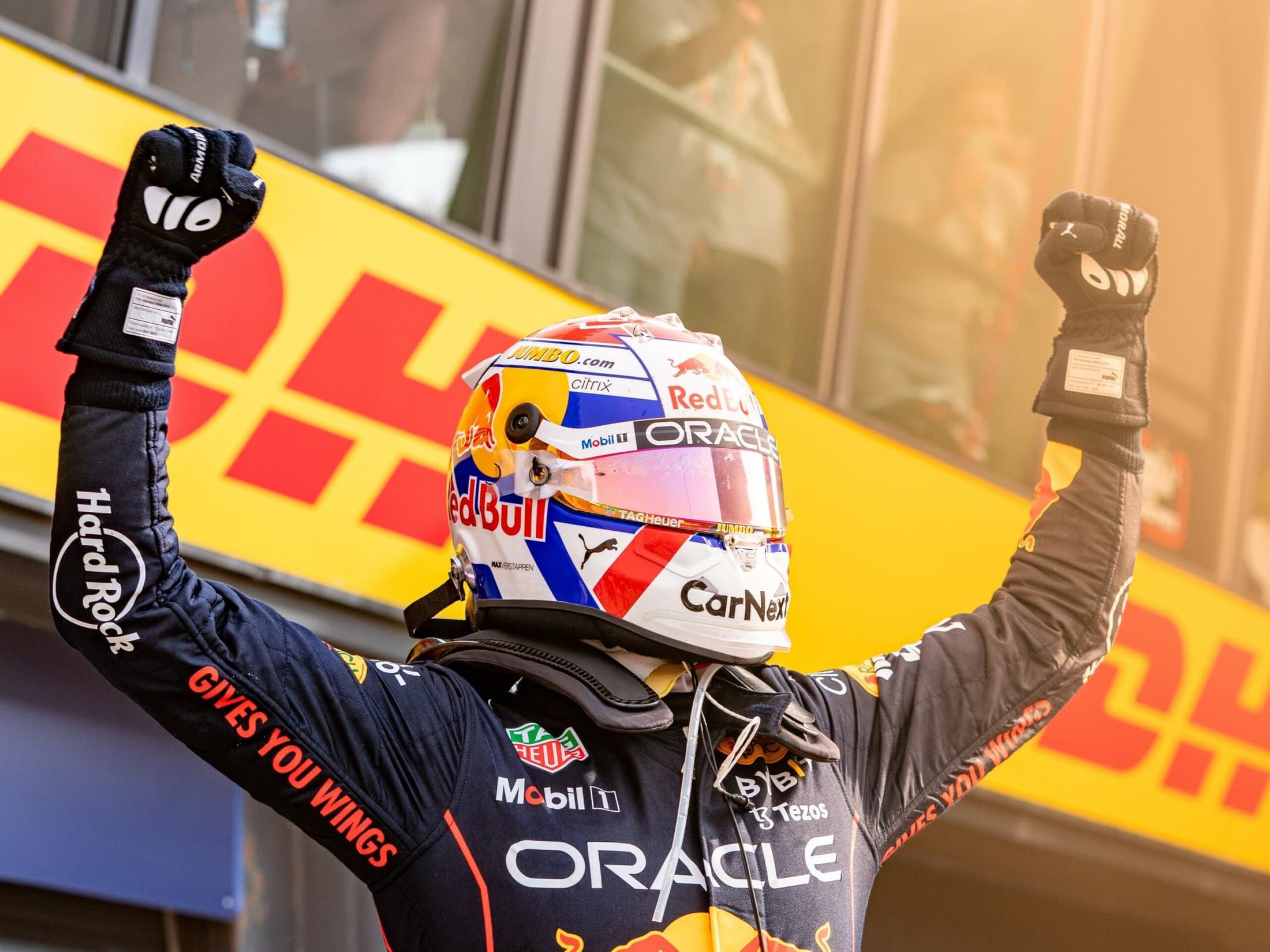The F1 season is already well on its way and even though teams are still fighting for 2025, they are already looking towards 2026 too. Why? Because the 2026 season will bring a whole new set of rules and regulations. Some teams have even admitted that they don’t care as much about 2025 and that their full focus is on 2026. But what changes will be made in F1 in 2025 and 2026?
What is new in F1 in 2025?
There won’t be huge changes in Formula 1 regarding rules and regulations in 2025, as most of the focus will be on 2026. However, there are still a few small things that teams will need to keep in mind. The main story of the 2025 season, of course, is the chaotic changes in the driver line-up. Below, you can find information on the changes for the upcoming season, so you can be as prepared as the teams!
1. Changes in the F1 race calendar
There are several small changes to the FORMULA 1 race calendar in 2025. However, the most notable ones occur at the start of the season. In 2025, Australia will once again be the season opener. The Grand Prix in Melbourne had been the season opener for a long time until 2020. From 2021 to 2024, Bahrain took on the role of opening the season, but in 2025, it will all start in Australia. Due to Ramadan in March, the Bahrain and Saudi Arabian Grands Prix will take place in April. Check out the full F1 race calendar here!
There is also a small change to the sprint calendar for 2025. Five out of the six sprint races will remain the same as last year, but Austria will be replaced by Belgium. The Circuit de Spa-Francorchamps hosted a sprint race in 2023, but it was not on the sprint calendar in 2024. Now, in 2025, it will be the only European circuit to host a sprint race. Click here to learn more about the sprint races which are held in 2025.
2. Increased minimum weight for the drivers
A small change for the 2025 season is related to weight. The minimum weight for drivers will be increased from 80 to 82 kilos. In 2019, the minimum weight rule was introduced to make racing fairer. Smaller and lighter drivers have extra ballast added to their cockpit to meet the minimum weight. However, the weight is increasing in 2025 to aid taller drivers, allowing them to ease up on restrictive diets to save weight, which will also be healthier. This change also means that the car will weigh 800 kg without fuel, compared to the previous 798 kg.
3. Changes regarding to Aerodynamics
As mentioned before, there aren’t many major changes to the cars in 2025, as those are set to come in 2026. However, the FIA has noticed more complaints from drivers about the cars not being able to follow each other closely. The cars seem to lose a lot of downforce when following, which has the FIA searching for temporary solutions for the 2025 season.
The exact regulations have not been set yet, but a few areas likely to be adjusted include the front wing endplates, the sides of the floors, and the fins in the wheels around the brake ducts. While major changes are unlikely, possible improvements are being explored.
4. Are there changes in the drivers line-up?
There absolutely are! In fact, more than half of the contracts of the drivers expired after the 2024 season. A lot of shuffling has taken place. Many drivers have moved to new teams, and we also have quite a few rookies on the grid.
It all started very early, with Hamilton moving to Ferrari before the season officially even began. Rookie Kimi Antonelli will be taking his seat at Mercedes. Meanwhile, Carlos Sainz, who is leaving Ferrari, will be moving to Williams. Esteban Ocon is heading to Haas, while rookie Jack Doohan was set take his place at Alpine. However, Doohan quickly got replaced after the Miami Grand Prix by Franco Colapinto. Another rookie, Oliver Bearman, will be Esteban Ocon’s teammate for 2025, replacing Nico Hülkenberg, who is moving to Sauber. Click here to read more about the 2025 drivers line-up.
5. No fastest lap point anymore
In 2025 there will be no point rewarded anymore for fastest lap during the race. Currently if a driver sets the fastest lap of the race and also finishes in the top 10, they will get a awarderd with a fastest lap point. There is no specific reason mentioned for it, however, there are speculations that it has something to do with the Singapore GP. During this Grand Prix, Lando Norris, who is the closest championship contender to max, was set to take the fastest lap point. However, Daniel Ricciardo, who drove for Red Bulls sister team RB, took that point from him in the last few laps. Even though Ricciardo did not get a point for it due to not finishing in the top 10, this did help Max Verstappen in a way, because now his closest championship rival did not get that point. It is not confirmed, however, this could be one of the reasons why the fastest lap will not be awarded anymore in the next season.
6. F1 rookie sessions doubled
In 2024, the teams had to give up their car to a rookie twice during an FP1 session. However, in 2025 this has been doubled to four times per season. This helps the rookies gain more experience and give them a feel of what it is like to drive in a FORMULA 1 car.
What are the changes for the 2026 F1 season?
2026 is when things get real. There will be a lot of changes in rules and regulations. The cars will look different, new systems will be introduced, and racing will hopefully be improved. The regulations have not been set in stone yet, so they could still change slightly. However, there are already some solid guidelines that give us an idea of what F1 will be like in 2026.
1. The cars will be both smaller and lighter
One of the biggest criticisms that Formula 1 has received over the years is that the cars are getting too big and too heavy. This isn’t ideal for racing at circuits like Monaco, where the cars can barely pass each other due to their size. In 2026, F1 hopes to change this. The cars will be smaller, with the wheelbase reduced from 3600 mm to 3400 mm. The wheel rims will remain 18 inches, as introduced in 2022, but the width of the front and rear tires will be reduced by 25 mm and 30 mm, respectively. This reduction will cause the tires to have slightly less mechanical grip.
The width of the cars will also be reduced by 100 mm, and the floor by 150 mm. This helps reduce downforce by 30% and drag by 55%. The reduction in drag will mean that the cars use less fuel, which could lead to higher top speeds. With the reduction in size and other measures, the cars will be about 30 kg lighter than they were in 2024.
2. Which changes will there be aerodynamically in F1 2026?
Besides the reduction in size, the car will also undergo significant changes aerodynamically. As mentioned before, not all the regulations have been set yet, but this is what we know so far.
One notable change is to the front wing. The wing will be about 10 mm smaller, but here’s the interesting part: the front wing, like the rear wing, will have two active flaps that can open up under certain circumstances. The rear wing will have three elements. These new wings will help the cars balance better in different situations. The lower beam wing will also disappear.
Another aerodynamic change will be to the floor. The floor will be much simpler compared to those of the current generation of cars. It will be partly flat with a D-driven diffuser. Additionally, as mentioned before, the floor size will be reduced. The floor will play a major role in the reduction of downforce.
3. DRS as we know it will disappear
Remember the front and rear wings that can both open up in 2026? You might think this is a new addition to DRS, but it is not. This new system will be called X-mode and Z-mode. Unlike DRS, however, for this system, drivers will not have to be within one second to activate it. So, what is it then?
The new system is not necessarily designed to help drivers overtake each other, but it is more of an aid to help them follow each other better. This leads us to X-mode. X-mode enables a configuration with low downforce, which helps the cars follow each other more easily, saves fuel, and allows drivers to reach higher top speeds. Drivers can activate X-mode manually. Then there is Z-mode, which is used when the cars experience high downforce in corners. It can be activated automatically when X-mode is turned off, or when drivers use their brakes.
But rest assured, even though the old DRS system is disappearing, something similar will be introduced: Manual Override Mode (MOM). It will essentially work the same as DRS. When drivers are within a second of each other, they will get access to the maximum power of their MGU-K, giving them an extra boost to help them overtake.
4. Changes to the Power Units in F1
The changes to the engine are also a big deal in 2026. It is a step closer to sustainability for F1. The new power units will run on 100% sustainable fuel, and they will have a significant increase in electrical power—almost 300%! With more electrical power, the cars will need less fuel. However, this change also brings a challenge for the driver. Turbo lag could return because the MGU-H has been removed, making the cars more difficult to control on corner exits.
5. The 2026 cars will be even safer
The 2026 cars will also be safer. Several parts of the cars will be reinforced. The roll hoops, for example, will be reinforced, as well as the anti-intrusion panels on the sides of the cockpit. This will protect the driver if the car flips over in a crash.
There are also some changes to the front impact structure. In this generation of cars, the structure consists of a single system that breaks off or deforms during a crash. However, this has now been changed to a two-phase impact structure, providing more safety during a crash. The second phase of this structure will protect the driver in the event of a second impact during a heavy crash.
Additionally, there will be a safety cell in the chassis of the cars. This cell will house the MGU-K, the battery, and the control electronics for added safety.
6. More pre-season testing
Because there will be so many changes in the 2026 season, teams will be allowed more testing. Usually, pre-season testing consists of 3 days. However, to help the teams with their brand-new cars, there will be three pre-season testing sessions, each lasting 3 days. The locations of these tests have not yet been confirmed.





